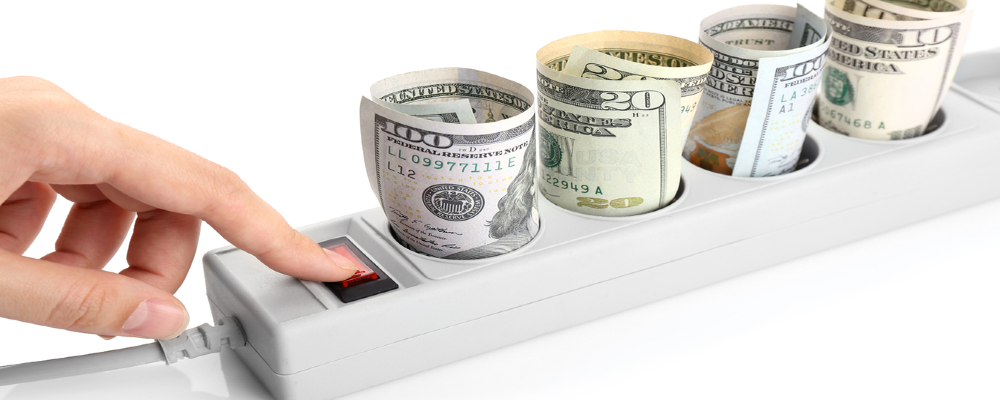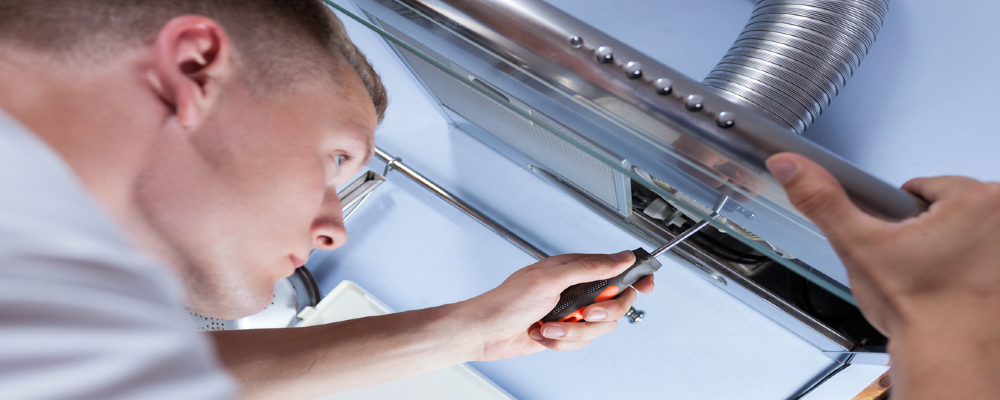Effective Ways To Save On Electrical Bill

On average, a typical American household consumes around 11,000 kilowatt-hours (kWh) a year. Depending on where you live, you typically spend $13,000 on your electric bill, which takes a 5-10 percent chunk out of your income.
The more kWh you use, the more money you spend. Nowadays, energy conservation is a growing trend, and the two primary reasons are saving money and protecting the environment.
Fortunately, decreasing your energy costs is not as difficult as you may think. There are simple and effective means to lower your electric bill by employing smart energy-saving methods.
Save Money On Electrical Bill For Free
There are many ways to save on energy usage. Some involve spending a significant amount of dollars. Think extensive renovations to make your home energy-efficient, and you’ll inevitably see dollar signs flashing in your mind. Of course, you’ll eventually recoup the money you spent on reducing your energy costs, so those dollars are well spent.
But if your budget is tight, you’ll be glad to know that there are approaches to saving money on your energy bill that don’t require major spending. Simply making small changes in your habits and lifestyle can add up to significant savings on your utility bills. You can do the following:
1. Switch off the lights and electrical appliances when they’re not in use
Keeping the lights burning in an empty room or the appliances running when you don’t need them can drive up your utility bill. According to the EIA, lighting needs account for around 6% of the country’s energy consumption. Add the kWh racked up by your heating and cooling units, along with other electrical appliances, and you end up shelling big bucks on your electricity needs as per the data coming from the Department of Energy.
To lower your electric bill, turn off the lights when you go to bed and switch off your heating and cooling devices when you leave the house.
Turning your appliances off at the power source can save you even more energy. Electronics left on standby continue sucking up kilowatt-hours, which compromises your energy-saving efforts.
2. Swap out old light bulbs with energy-saving ones
Energy-efficient light bulbs save you money in two ways. One, they last up to 12 times longer than traditional light globes, and two, they consume less energy which helps lower your electric bill. On average, compact fluorescent lights (CFLs) and light-emitting diodes use about 25-80 percent less energy compared to traditional light bulbs.
These light bulbs may cost more than the typical incandescent, but because they last longer and consume less energy, they can still save you money over time.
3. Conduct an energy audit
Assessing your in-home energy use can help you identify what features of your home contribute to high energy consumption. By determining what’s raising up power usage, you can take steps to improve energy efficiency. Is your heating and cooling system working overtime? Are your old appliances using up considerable electricity? You can find out with an energy audit.
You should perform a home energy audit every two to three years to ensure that your home remains energy-efficient. You can carry out the audit on your own or hire a professional to do the job. Either way will help you save big bucks on your electricity spending.
4. Check your home’s insulation
A properly insulated home will require less energy to keep cool during summer and warm during the winter months. According to EPA data, you can save as much as $200 or 10% off your average utility expenses when you seal and insulate your home. That’s because 49% of your home’s energy costs come from your cooling and heating appliances.
Heat seeping out of your home during winter and cold air escaping from hidden leaks during summer can cause spikes in your energy bills. That means money down the drain.
You might wonder if your house needs new insulation. Well, statistics from the North American Insulation Manufacturers Association (NAIMA) show that 90% of single-dwelling homes in the U.S. are under-insulated. This means there’s a big chance that your home needs some work.
You can look for signs of poor insulation, such as significant temperature variations from room to room, drafts around windows and doors, and huge spikes in your electricity bill during the hottest and coldest months of the year.
Improving your home’s insulation is one of the best ways to save on kilowatt-hours.
5. Upgrade old appliances
Upgrading your old appliances means you’ll have to shell out some green bucks at the outset. But with the money you save by replacing your electricity-hungry electronics with more efficient ones, your upgrades will eventually pay for themselves.
In shopping for replacements, look for Energy Star certified appliances, one of the best energy efficiency indicators.
The Energy Star certification means that the model had been tested both for performance and energy efficiency. Energy Star certified appliances may cost a bit more than conventional models. But you can expect to recover the added premium in price on what you save on your utility expenses.
For example, an Energy Star certified air conditioner uses 10% less watts than its conventional counterpart. That translates to an average savings of around $75 a year.
An AC unit that uses less energy not only saves you money but it helps reduce your carbon footprints as well.
6. Reduce your water heating expenses
Although your water heater is a major electricity hog, you don’t have to shiver under a spray of cold water when bathing just to save on your electric bill. Aside from swapping your old water heater with a more efficient one, there are other ways you can lower water heating costs.
One, use less hot water. Limiting the time you spend showering reduces the amount of hot water you use.
Two, lower the thermostat of your water heater. Every 10-degree F reduction in temperature saves you around 3%-5% on your utility costs. You’ll still have hot water, but you’ll reduce your kWh consumption.
Three, insulate your water heater along with the first six feet of the pipes connected to it. Insulating your water heater and pipes lets you save as much as 16% on your water heating costs by reducing standby heat losses. With proper insulation, hot water remains at the ideal temperature without added electricity consumption.
7. Install smart power strips
A traditional power strip accommodates several devices while using only one outlet. But keep in mind that your electronics continue sucking up electricity while they’re plugged in, even when you’re not using them.
A smart power strip lets you save electricity because it will turn off the juice on electric devices that are in standby mode.
8. Use a programmable thermostat
Take your power-saving goals to a new level by installing a programmable thermostat in your home. This wi-fi-enabled device lets you save electricity as it allows you to control your home’s temperature remotely via the internet.
A smart thermostat keeps the temperature low when you’re away. By putting in information regarding your desired temperature and your daily schedule, this device makes sure that the house is at your comfort level when you arrive.
Smart thermostats learn your preferences and schedule and will give suggestions on how you can further curb your kWh consumption.
9. Make some adjustments in how you do your laundry
Do you usually wash your clothes with warm water? That may not be a great idea as warm water needs heating, which requires electricity. Washing clothes in cold water will put more money in your pocket as it significantly reduces the kWh you consume.
According to Consumer Reports, setting your washing machine to 60 degrees Fahrenheit versus the typical 75 degrees Fahrenheit setting lets you save around $60 a year on your utility. And cold water cleans your clothes just as well.
Besides washing with cold water, you can air dry your clothes instead of using an electric clothes dryer. Because clothes dryers account for about 12% of your household electricity, hanging your laundry out to dry after taking them out of your washing machine can save you up to $200 per year.
10. Shop around for the best power retailer
Per kilowatt-hour charges vary across different retailers. Just a few years ago, you didn’t have a choice on which electric company will serve your needs. Luckily, you now have more options and switching can help you save money on your bills.
Different Seasons, Different Ways To Lower Utility Bills

Saving money by lowering your kWh consumption is a must for every season. But because it is during summer and winter that you see a surge in utility costs, there’s a more urgent need to implement some measures to curtail your electricity use.
In winter
Let the sun in: Open the curtains and blinds in windows that face the sun. This not just lets in natural light, which lessens the need for artificial lighting, but it also warms up your home. Remember to close the curtains at night to minimize heat loss.
Seal and insulate against leaks: Caulking and weather stripping stops heat from leaking out, thus your heater doesn’t need to work harder to keep the house warm.
Keep the thermostat low: Instead of trying to warm the whole house, wear sweaters and socks to stay snug at home. Turning back the thermostat to 10 or 15 degrees can cut 10% off your utility costs.
Use space heaters: These are ideal for warming up small spaces. It’s more cost-effective to heat a closed-off area by using a space heater than heating your entire house.
In summer
Use fans with your air conditioner: Desk fans and ceiling fans do a good trick in cooling down your living space. The circulating air they create somewhat lowers the temperature, so you don’t need to crank up your AC all the time.
Install blinds on your windows: Installing blinds and keeping them closed during the day limits the amount of sunlight entering the house. This is especially true for western and southern facing windows. Closing the blinds lessens the greenhouse effect created by sunlight, which warms up your living space.
Use a dehumidifier: Not only does a dehumidifier offer some health benefits, but it also lowers your energy use. Because there’s less humidity or moist air in your living quarters, your AC unit won’t have to work as hard to cool the space down. It just needs to bring the temperature down and doesn’t have to remove the moisture in the air.
Simple Home Fixes That Decreases Energy Use

Drastic reductions in electricity use can be accomplished through simple fixes that don’t require much effort.
Appliances and electronics
Use your electronics smartly. Avoid wasting electricity due to phantom loads, or the kWh consumed by electronics that remain plugged in even when not in use. Buy an advanced power strip that detects and turns off electronics that are in standby mode.
Water Heating
Water heating accounts for around 18% of your utility bill, making it the second-largest electricity sucker in your household. So by wasting less water, you reduce the kWh consumption of your home.
To conserve water, look for and fix leaks, install low-flow fittings, make adjustments in how you do your laundry, or purchase an efficient dishwasher and washing machine.
Space heating and cooling
Keeping a comfortable temperature in your home uses a lot of electricity when you use electric devices to maintain the temperature at your comfort level. To lessen your kWh demand, find alternative ways of lowering the temperature of your living environment.
For example, open the windows to let air in and cool down the room. You can also install insulated curtains. These unique curtains help keep your living space warm during winter and cool during the hot season. They do so by creating an airspace between the curtain’s surface and the window, which prevents heat loss from inside your home during cold days and heat gain from the outside in summer.
Using insulated curtains, you can maintain a comfortable temperature without hiking up your cooling and heating expenses.
Installing ceiling fans for use during the hot months can help lessen your dependence on your air conditioning unit, which typically causes a downward adjustment on your energy bill.
Lighting
We’re not simply talking about swapping out old light bulbs and other lighting fixtures with more efficient ones. You can lower the kilowatt-hours you consume for artificially lighting up your home by using natural light. Skylights will bring in more natural light and can be part of your next retrofitting project.
FAQs
How can I save on my electric bill?
You don’t need to make dramatic and expensive changes to save on your electric bill. Making simple adjustments in your habits can lead to significant cuts in the kWh you accumulate. For example, refraining from running electricity-hungry appliances during peak hours will result in lower power costs.
What makes your electric bill high?
In the wake of the pandemic, a rise in your utility bill is expected. As you stay home more, you naturally consume extra kilowatt-hours for cooling your house or keeping it warm. Moreover, your electronics are plugged in longer than usual, especially if you’re working from home.
But it’s not just the increase in your kWh use that’s causing a spike in your bill. Your utility company may have imposed higher rates in your area. The price per kWh varies across the country, and there are frequent fluctuations due to several reasons. As the rate you pay rises, you’ll be spending more money even if your consumption remains the same.
Looking for a workaround for this situation? You can look for a retailer with lower rates. In fact, this is one of the proven ways to save money on your utility.
What costs the most on your electric bill?
Usually, what racks up the most kWh in your home is the HVAC system. In an average American household, expenses for keeping the temperature in your home at a comfortable level account for 46% of the total electricity expenditures. Depending on the efficiency of your unit, your air conditioning, and heating system can suck up between 28-63 kWh a day or about 850-1,950 kWh in a month.
But there are ways you can prevent your HVAC unit from wreaking havoc with your budget.
– Turn on the air conditioner only during the hottest times of the day, which is usually between 12 and 4 pm.
– Use ceiling fans to let air circulate inside a hot room.
– Open your windows to let in some cool air.
– Wear loose, comfortable clothes in summer and warm clothes during the cold months
– Use a programmable thermostat.
– Set the thermostat at a level that’s optimized for both comfort and efficiency.
Being wise in the use of electricity creates positive results, both for your pocket and the environment. It’s obvious how lowered power use can save you some bucks over time. The less you pay for your utilities, the more money you’ll have left to pay for other expenses.
But lowering the number of watts you use lets you give Mother Nature a helping hand as well.
How do you help the environment when you use less power? Well, to generate those watts you need for your home, power plants burn fossil fuels, which is still the most inexpensive way of producing energy.
However, this method exacts its toll on the environment in many ways. Burning fossil fuels release toxic gases, polluting the air and driving up the earth’s temperature by trapping heat in the atmosphere. The trapped heat impacts the planet and is considered one of the significant factors behind climate change.
As it is, we’re now feeling the detrimental effects of the rise in the earth’s temperature. These consequences include rising sea levels, increased frequency and intensity of natural disasters, extreme weather conditions, and the like.
Traditional methods of power generation also use up the world’s limited natural resources. Trees need to be cut, the land is stripped of minerals, scarce water sources become polluted.
In addition, power production harms animals and the ecosystem. Material extraction necessary for the procurement of fossil fuels hidden deep inside the earth destroys habitats on land and water. The destruction of these habitats drives up the extinction rate by 1,000 times beyond normal levels.
By taking steps to reduce power use, you not just enjoy extra money to spend as you wish, but you also contribute to a healthier world.
Updated on
